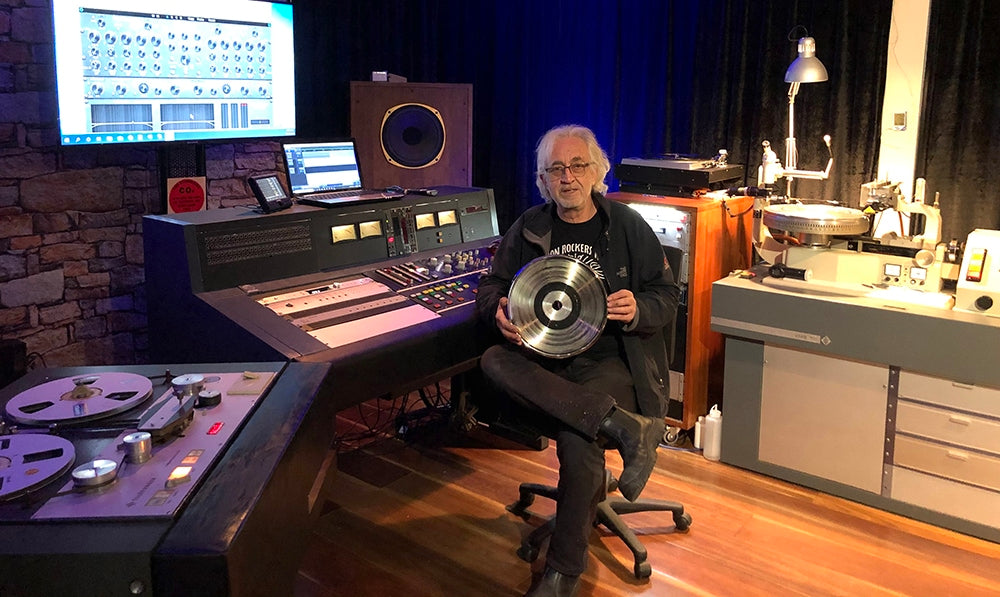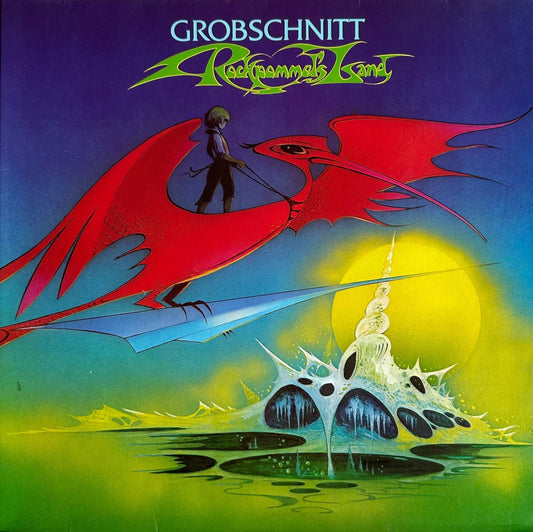Part One, Part Two and Part Three of J.I. Agnew’s look at the Telefunken M15A tape machine ran in Issues 140, 141 and 142. His series on the M15A concludes here.
One of the few remaining users of the Telefunken M15A in a professional setting is Mike Papas, a mastering engineer at XL Productions (www.vinylrecordproduction.com) in Australia, who has put together a disk mastering system consisting of Neumann’s complete package of the 1970s including a VMS-70 lathe, a Neumann Disk Mastering Console and the MT-75 console with the Telefunken M15A preview head tape machine. The disk mastering console is the typical console you’d expect, with EQ and so on. The MT-75 is the Neumann furniture console for the Telefunken M15A chassis. A preview head tape machine is used for cutting records to disc. The preview head enables listening to what’s on the tape before the signal goes to the cutting lathe, enabling the pitch/depth control system to automatically adjust the pitch and groove depth according to whether the signal is louder or softer.
Not only does Mike cut lacquer master disks for vinyl record manufacturing, but he recently also set up his own electroplating laboratory, to process his lacquer cuts and create the metallic stampers that are needed to press the records. What follows is his story of how he got started in this industry and how he chose the Telefunken M15A as his mastering tape machine.
J.I. Agnew: How did you get into cutting records?
Mike Papas: A fascination with sound. The fact you can get full-frequency sound from scratching a groove into a disc fascinated me, so I took a job at the RCA Records plant [in Australia] during my holidays. Once I saw their Neumann disc mastering system I was hooked. I had started [working] with a mono Presto 6N, followed by a couple of older Neumann stereo lathes, and received training from some experienced disc-mastering engineers, so I felt I was ready to tackle the world. I just needed a professional disc mastering system that could equal what was already out there.

Mike Papas with his Telefunken AM15A preview head tape machine.
JIA: Why the Telefunken M15A tape machine as a source to cut from?
MP: I eventually bought RCA’s disc mastering system, which was a complete Neumann system – it’s what you [would get] when you asked Neumann to supply a fully-integrated plug and play system, and it included an M15 in Neumann’s MT75 console. Being the only M15 in Australia and totally unknown, it was sometimes frowned upon, but it never chewed a tape, missed a beat or failed to impress. [My] new studio is modeled on the finer German studios so it had to be an M15 again, except this time it’s an M15A with tape speeds of 15 and 30 ips. I think it’s important to offer 100-percent full analog cuts even though there isn’t a high demand at present.
JIA: Where did you find the preview-head M15A? There’s not many of these around!
MP: You’re quite right. I found it by coincidence in England. It had been converted to a regular tape recorder and was missing all the parts for preview, which were impossible to find. Our friends at GZ Media in the Czech Republic, who have a few M15 preview machines, came to the rescue and made the sliding tape delay bar. The preview head block was found in Germany and the missing [electronics] cards were found in Holland. It took two years to find all these parts to restore the preview function [of this machine].
JIA: Is there a story behind your Neumann lathe?
This VMS70 was owned by CBS Sony Australia, where it cut the cream of the CBS and Warner Music catalogs up until 1991. (Their second disc mastering room had a Scully/Westrex system). It sat in a glass display case in the foyer of the Sony CD factory for 27 years as part of their museum of antiquated machinery. They wouldn’t sell it, so I bought one from Europe. Soon after, Sony closed the CD factory and offered us the lathe. I liked its history and the fact it was a one-owner machine that hadn’t been tampered with, so I couldn’t say no. It needed a lot of work after sitting idle, and our engineer, who has decades of experience with every Neumann lathe from VMS66 up to VMS82, still spent about forty days servicing it and it’s absolutely beautiful.

The preview-head version M15A in the Neumann MT-75 console.
JIA: How did you decide to also do the record plating in-house?
MP: It’s great to cut lacquers and send them off to the plating shop but as you can’t play a master lacquer disc, you can’t know what you’re sending out. Having the technical knowhow from way back, it was a no-brainer for us to do plating and [also have the ability to] service the increasing number of new pressing plants that don’t have this facility. By playing the mothers, we can be certain that the subsequent stampers we’re sending to our customers are perfect.
As you know, the freshly cut lacquer disc has a spring-back effect. Not only is lacquer removed from the disc [when cut] to form the groove, but the lateral motion of the cutting stylus exerts sideways pressure on the lacquer, which just wants to spring back to where it came from, altering the geometry of the groove. The lacquer is [actually] in motion from the time it’s cut, so it’s advantageous to plate it immediately. A maximum of 72 hours is recommended, but we generally do it within a few hours and we like the fact the lacquers don’t have to be transported anywhere and subjected to heat.

Mike Papas in his Mastering Studio with a Neumann VMS-70 lathe, transfer console and preview head tape machine.
JIA: What are the challenges in plating?
MP: We have what are probably the most advanced plating systems, which are PLC (programmable logic controller) controlled so everything is monitored and kept within a very strict process window, which alleviates the usual challenges. The systems are smart enough to send you a text message when the stampers are done or the filters need changing, but they won’t actually change the filters (the filters are for the electrolyte solution in the galvanic baths) for you which is an unpleasant and very messy business. Motivating yourself to do that is sometimes the biggest challenge!
An unexpected challenge was to source a good stamper-centering machine capable of a super low 10-20 micrometers of eccentricity. While this low eccentricity is not necessary for records and it takes a few extra seconds [to perform the process], we do it because we can, and I don’t like the off-center records we see today. EMI Records’ specified tolerance for eccentricity was 50.4 micrometers (the width of an unmodulated groove) so anything less than that is no doubt better.
[Author’s note.: Once a lacquer master disk is electroplated, it is discarded, and the disk’s center, as produced by the lathe, is lost. The stampers need to be centered again, by optical means, and a new hole punched in the middle, larger than the hole on the final record, to allow the stamper to be securely clamped onto the molds of the record press. Eccentricity on the final product causes a once-around change in speed and is usually caused by inadequate stamper centering.]

Record stamper centering equipment.
JIA: You are currently handling all the manufacturing stages of turning a master tape into a stamper. What’s next?
MP: Like anything in life, nobody knows what’s next. We’ll just keep doing what we love doing and servicing the ever-increasing number of new pressing plants. We plan to double our plating capacity in the next twelve months and go from there.
Header image: Mike Papas holding a stamper made from one of his lacquer master cuts.



